What is the best Puff Pastry substitute?
Are you looking for the best puff pastry substitute? In the world of baking, nothing quite matches the unparalleled flakiness and buttery goodness of puff pastry. But what happens when you find yourself without this essential ingredient? Fear not, for we have scoured the culinary landscape to uncover the best puff pastry substitutes that will ensure your baked goods are just as delightful. Try using, Shortcrust Pastry, Phyllo (Filo) Dough, Croissants, Biscuit Dough, Pie Crust, or Rough Puff Pastry.
What is Puff Pastry?
Puff pastry is a light, flaky, and delicate pastry that you make by creating multiple layers of dough and butter through a process called lamination. This process involves folding and rolling the dough several times to create thin layers separated by thin sheets of butter. When baked, the water content in the butter turns into steam, causing the layers to separate and puff up, resulting in a crisp and airy texture.
The key characteristic of puff pastry is its numerous layers, which give it its signature flakiness and volume. It’s used in a wide variety of sweet and savory dishes, such as pastries, pies, tarts, turnovers, and more. Use puff pastry to create dishes with both sweet fillings like fruits, creams, and chocolate, as well as savory fillings like meats, vegetables, and cheeses.
Making traditional puff pastry from scratch can be quite time-consuming and requires precise folding and chilling steps to achieve the desired flakiness. Due to its complexity, many people opt for store-bought puff pastry dough, which is readily available in the frozen section of supermarkets and is a convenient option for a variety of recipes. And don’t worry, it really doesn’t matter whether you choose to make your own puff pastry or buy the ready-made version, your dish will still taste fantastic.
In summary, puff pastry is a versatile and delicious pastry known for its light, crispy, and flaky texture, achieved through a labor-intensive process of layering dough and butter.
Let’s dive in and discover the best puff pastry substitutes for your next culinary adventure.
Okay, before we look at your puff pastry substitute options, let’s deal with that empty cupboard situation!
Where can I buy Puff Pastry
If you want to be more prepared and ensure you don’t run out of puff pastry then you should stock up now.
Nowadays most supermarkets stock a wide variety of puff pastry – chilled, frozen, or already pre-made. So we thought, why not save time and have some puff pastry shells in your pantry, ready-made and ready to use.
So why not jump on and place your order today.
STOCK UP NOW!
La Boulangerie Puff Pastry Shells
96 – ready-made puff pastry shells. Choose sweet or savory ingredients to create perfect appetizers or mini-deserts – just fill and serve.
Suitable for home-freezing. And no artificial additives.
What can I substitute for Puff Pastry?
Here are some of the best ingredients to substitute the flavor and role that puff pastry provides in your recipes.
- Shortcrust Pastry
- Phyllo (Filo) Dough
- Croissants
- Biscuit Dough
- Pie Crust
- Rough Puff Pastry
Puff Pastry substitutes
Shortcrust Pastry
Shortcrust pastry, also known as pie crust or short pastry, is a type of pastry dough that’s commonly used as a base for both sweet and savory pies, tarts, quiches, and other baked dishes. It has a crumbly and buttery texture and is relatively easy to make. Unlike puff pastry, which is known for its multiple layers and flakiness, shortcrust pastry is simpler in construction and doesn’t puff up to the same extent when baked.
Do you want to try and make your own? Here’s a basic recipe for making shortcrust pastry:
Ingredients:
- 1 ¼ cups all-purpose flour
- ½ cup (1 stick) unsalted butter, cold and cut into small cubes
- ¼ teaspoon salt
- 3-4 tablespoons ice water
Instructions:
- Mix the Dry Ingredients: In a mixing bowl, combine the all-purpose flour and salt. You can also add a pinch of sugar if you’re making a sweet pastry.
- Incorporate the Butter: Add the cold, cubed butter to the flour mixture. Use a pastry cutter, fork, or your fingers to work the butter into the flour until the mixture resembles coarse crumbs. The goal is to have small pea-sized bits of butter evenly distributed throughout the flour.
- Add Ice Water: Gradually add ice water, one tablespoon at a time, to the mixture. Gently mix the dough after each addition. Stop adding water once the dough starts to come together. Be careful not to overwork the dough; you want it to just hold together when pressed.
- Form a Disk: Gather the dough and press it together to form a rough disk. Avoid kneading or overworking the dough. If the dough is too dry and crumbly, you can add a tiny bit more water.
- Chill the Dough: Wrap the dough disk in plastic wrap and refrigerate it for at least 30 minutes. Chilling allows the butter to firm up again and makes the dough easier to roll out.
- Roll Out and Use: Once chilled, place the dough on a lightly floured surface and use a rolling pin to roll it out to your desired size and thickness. Transfer the rolled dough to your pie or tart pan, pressing it gently into the corners and edges. Trim any excess dough hanging over the edges.
- Pre-Baking (Blind Baking) if Needed: Depending on your recipe, you might need to pre-bake the shortcrust pastry before adding the filling. To do this, line the pastry with parchment paper and fill it with pie weights or dried beans. Bake in a preheated oven at around 375°F (190°C) for about 15-20 minutes or until the edges are lightly golden.
- Add Filling and Bake: If your recipe calls for a pre-baked crust, remove the parchment paper and weights, then add your filling. If not, you can directly add the filling and then bake according to your recipe’s instructions.
Use shortcrust pastry for both sweet and savory dishes. It provides a sturdy yet crumbly base that complements a wide range of fillings.
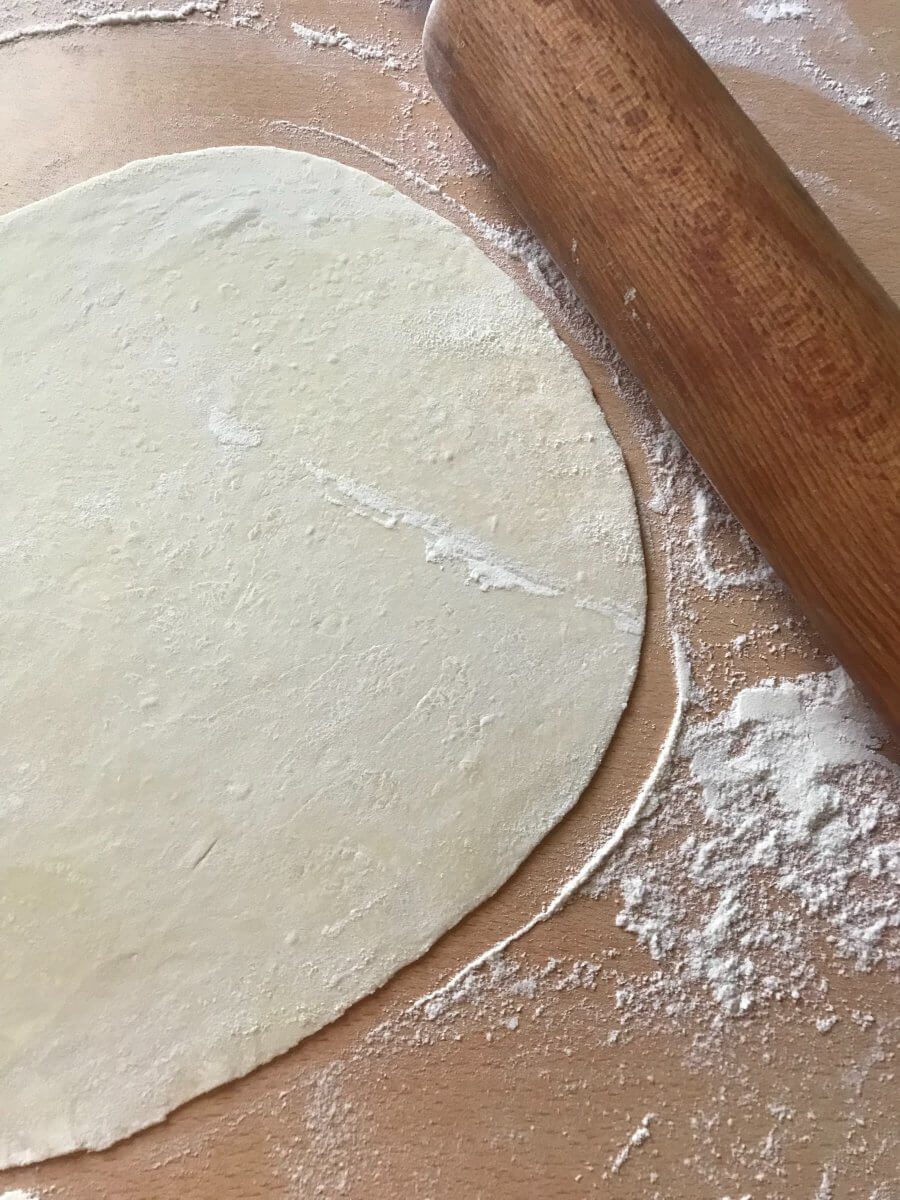
Phyllo (Filo) Dough
Filo pastry, also known as phyllo pastry, is a very thin and delicate pastry that’s commonly used in Mediterranean and Middle Eastern cuisines. It’s prized for its crisp and flaky texture, which is achieved by repeatedly layering and folding the dough. Filo pastry is incredibly versatile and can be used for both sweet and savory dishes.
Filo pastry is made by stretching and rolling out dough until it’s paper-thin. The dough is made from flour, water, and a small amount of oil or fat. The key to working with filo pastry is to keep it moist while assembling your dish, as it can dry out really quickly. The best tip is to cover the pastry with a damp cloth or plastic wrap.
Here are a few dishes you can make with filo pastry:
- Baklava: A sweet pastry made from layers of filo pastry, chopped nuts, and honey or syrup.
- Spanakopita: A savory Greek dish made from layers of filo pastry filled with spinach, feta cheese, onions, and herbs.
- Tiropita: Another Greek dish made with filo pastry, this time filled with a mixture of cheese, often feta.
- Strudel: Use similar thin dough is dishes like apple strudel.
- Samosa: In certain cuisines you can use filo pastry to make samosas, a popular savory snack filled with spiced potatoes, peas, and sometimes meat.
Here are a few tips for working with filo pastry:
- Keep the pastry covered with a damp cloth or plastic wrap while working to prevent it from drying out.
- Brush each layer with melted butter or oil to ensure a crisp texture.
- Don’t be discouraged by tears or holes in the pastry – they’re common and won’t affect the final result.
- Layer multiple sheets for the desired thickness and texture.
Overall, filo pastry is prized for its ability to create light, crispy, and flaky layers in various dishes. It adds a unique texture and taste to both sweet and savory recipes, making it a favorite among cooks who appreciate its delicate qualities.
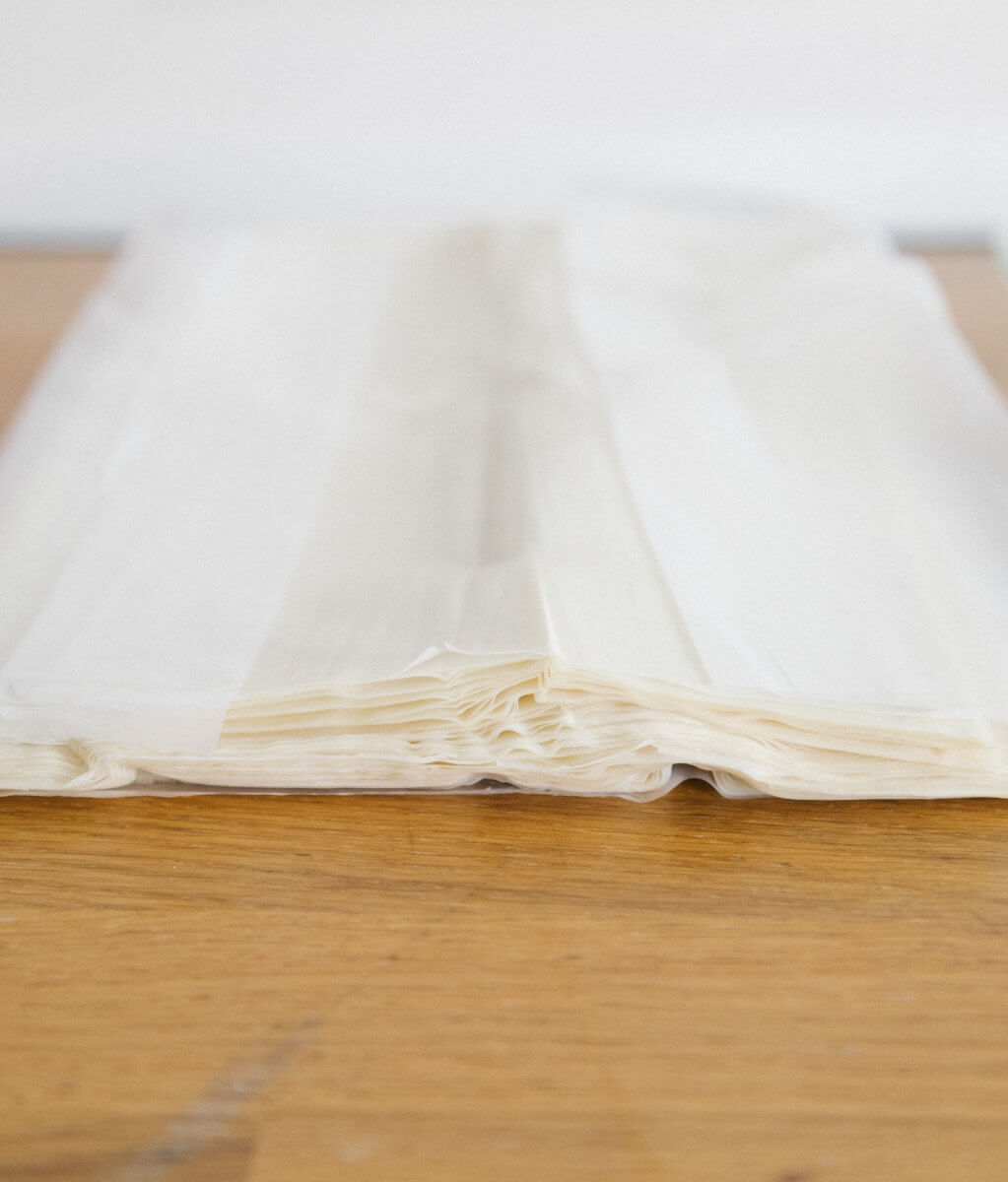
Croissants
Croissant Dough
Croissant dough is a type of laminated pastry dough that is commonly used to make croissants, a popular French pastry known for their flaky, buttery, and crescent-shaped appearance. You create laminated dough through a process of layering butter between thin layers of dough and then folding and rolling the dough multiple times to create distinct layers that puff up when baked.
Using croissant dough as a substitute for puff pastry can work well in certain recipes, as both croissant dough and puff pastry share some similarities in terms of their buttery and flaky nature. However, we would recommend using pre-made croissant dough sheets as you would spend the same amount of time making puff pastry.
Pre-made Croissants
You can also use cooked croissants as a substitute for puff pastry in certain recipes, although there are some differences between the two that you should be aware of. Both croissants and puff pastry are laminated doughs, which means they have layers of butter and dough that create a flaky texture when baked. However, croissants are typically enriched with ingredients like milk, sugar, and sometimes yeast, which can give them a slightly different flavor profile compared to plain puff pastry.
With these points in mind, cooked croissants can work as a substitute for puff pastry in recipes where the flavor and texture differences won’t significantly impact the final dish. For example, you could use cooked croissants to top a pot pie, create a bread pudding, or make a croissant-based tart crust. However, for recipes where a neutral and ultra-flaky pastry is crucial, puff pastry might still be the preferred choice.
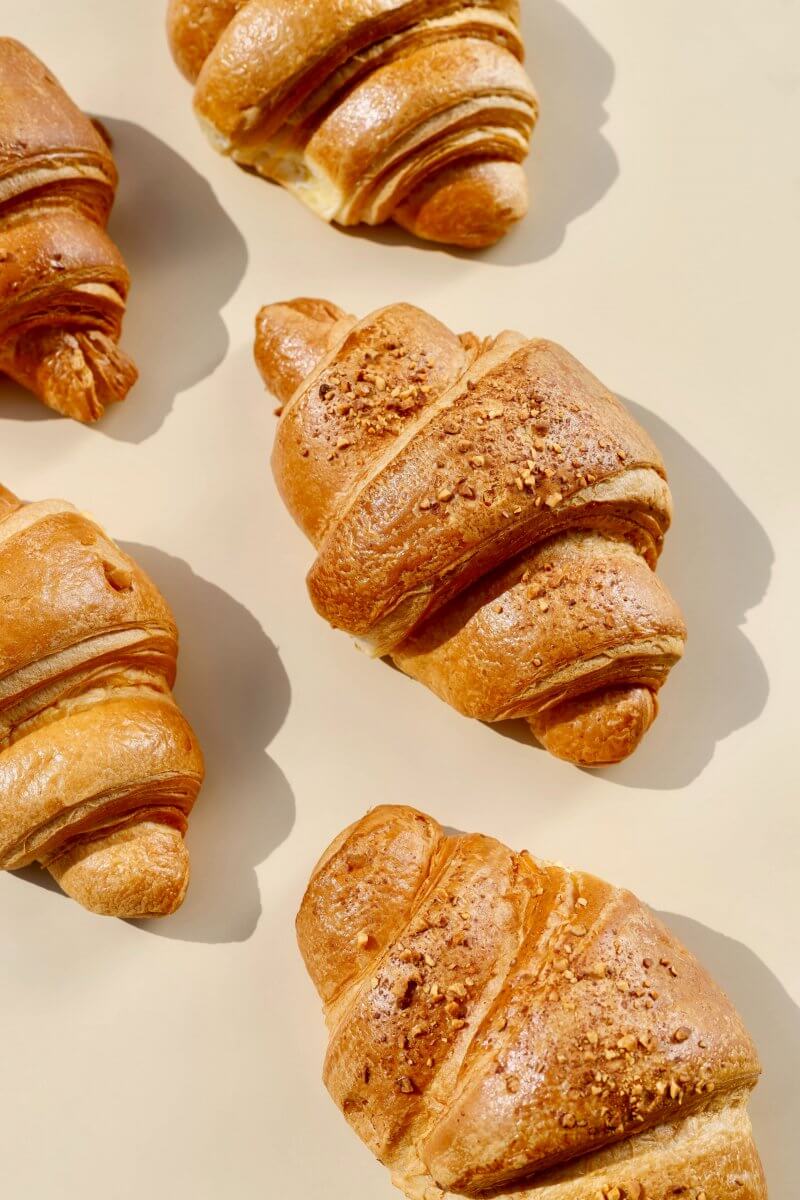
Biscuit Dough
Using biscuit dough as a substitute for puff pastry can sometimes work, but there are a few things you should consider before making the substitution.
Here’s what to keep in mind when considering biscuit dough as a substitute for puff pastry:
- Texture: Soft and tender biscuit dough is known for its delicate, flaky layers. Biscuit dough does not have the same layering of butter that puff pastry does, so it won’t achieve the same level of puffiness and flakiness.
- Rising: Biscuit dough often contains baking powder or baking soda, which causes it to rise and become slightly fluffy when baked. This can result in a different texture compared to the crisp and airy layers of puff pastry.
- Flavor: Biscuit dough tends to be richer and slightly savory due to the butter or shortening used, as well as the leavening agents. Puff pastry has a more neutral flavor that allows the fillings to shine.
- Sweetness: Depending on the recipe, biscuit dough might have a hint of sweetness. This could impact the overall flavor of your dish, especially in savory recipes.
- Versatility: Biscuit dough is commonly used for biscuits, scones, and other baked goods, but it might not work as well in recipes that require the delicate, flaky layers of puff pastry, such as certain pastries and tarts.
If you’re considering using biscuit dough as a substitute for puff pastry, here are some types of recipes where it might work:
- Pot Pies: Use biscuit dough as a topping for savory pot pies, which will add a slightly fluffy and tender layer on top of the filling.
- Cobblers: Drop biscuit onto fruit or savory fillings to create a rustic cobbler topping.
- Empanadas: Use biscuit dough to encase savory or sweet fillings, similar to traditional empanada dough.
In summary, while biscuit dough can serve as a substitute for puff pastry in certain recipes, it won’t provide the same level of flakiness and puffiness.
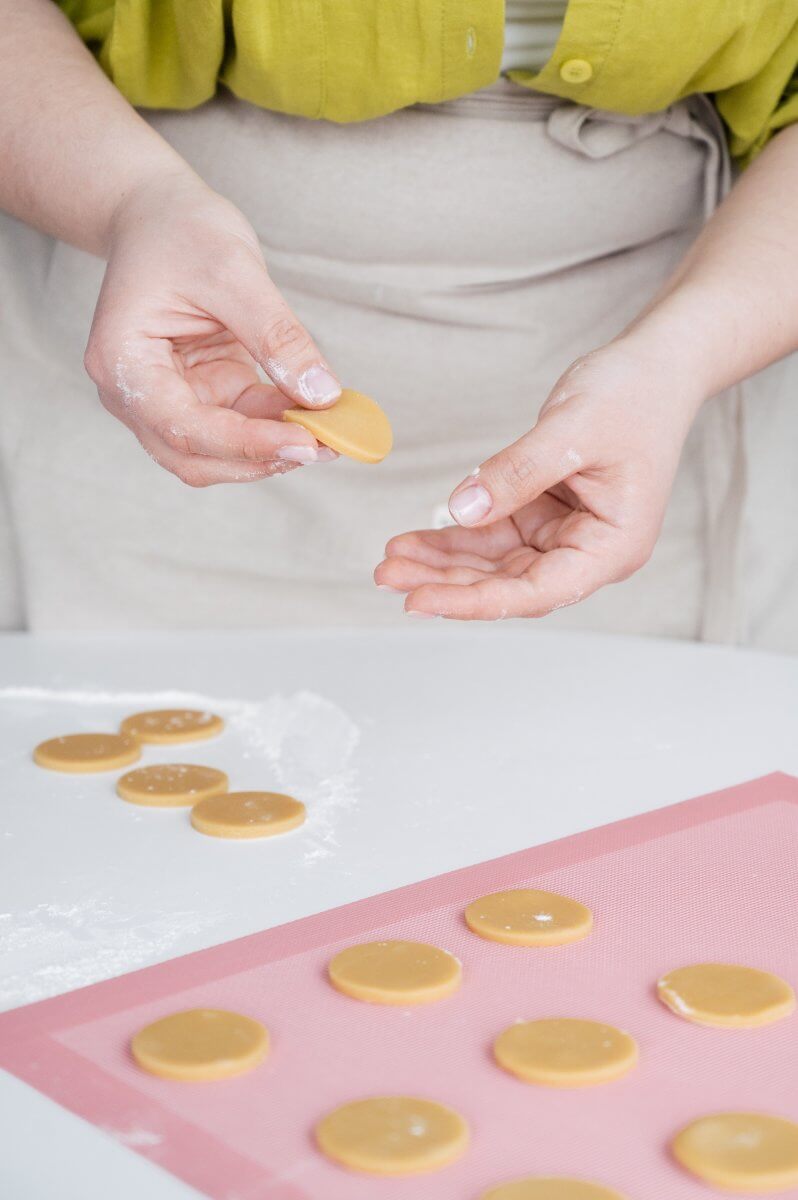
Pie Crust
Using pie crust as a substitute for puff pastry is possible in certain recipes. Here’s a basic recipe for making a classic pie crust. This recipe makes enough dough for a single 9-inch pie crust. You can easily double the recipe if you need a top and bottom crust for a pie.
Ingredients:
- 1 ¼ cups all-purpose flour
- ½ teaspoon salt
- ½ cup (1 stick) cold unsalted butter, cut into small cubes
- 3-4 tablespoons ice water
Instructions:
- Mix Dry Ingredients: In a mixing bowl, whisk together the all-purpose flour and salt.
- Cut in Butter: Add the cold butter cubes to the flour mixture. Use your fingertips to quickly work the butter into the flour until the mixture resembles coarse crumbs. The butter pieces should be about the size of peas.
- Add Ice Water: Drizzle 3 tablespoons of ice water over the flour-butter mixture. Use a fork or your hands to gently mix and bring the dough together. Add more ice water, 1 tablespoon at a time, if needed. The dough should hold together when squeezed but not be overly wet.
- Form Dough: Gather the dough and shape it into a flat disk. Avoid overworking the dough; you want it to come together without excessive handling.
- Chill the Dough: Wrap the dough disk in plastic wrap and refrigerate it for at least 30 minutes. Chilling the dough helps relax the gluten and makes it easier to roll out.
- Roll Out the Dough: On a lightly floured surface, roll out the chilled dough into a circle that’s about 2 inches larger than your pie pan. Roll from the center outward, turning the dough occasionally to maintain an even thickness.
- Transfer to Pie Pan: Gently fold the rolled dough in half, then in half again to make a triangle. Place the dough triangle in the center of your pie pan, then unfold it to cover the pan. Gently press the dough into the bottom and sides of the pan.
- Trim Excess Dough: Trim the excess dough hanging over the edges of the pan using kitchen scissors or a knife.
- Crimp the Edges: Use your fingers to create a decorative edge by pressing the dough with your thumb and forefinger, or use a fork to press down along the edge.
- Chill Again (Optional): For recipes that require a pre-baked crust, refrigerate the dough-lined pan for about 15 minutes before baking. This helps prevent shrinkage during baking.
- Pre-Baking (Optional): If your recipe calls for a pre-baked crust, preheat your oven to 375°F (190°C). Line the crust with parchment paper or aluminum foil and fill it with pie weights or dried beans. Bake for about 15-20 minutes, then remove the weights and bake for an additional 5-10 minutes until the crust is golden. Allow the crust to cool before filling.
Now you have a basic pie crust that you can use for both sweet and savory pies. Just adjust the filling and baking instructions based on your recipe.
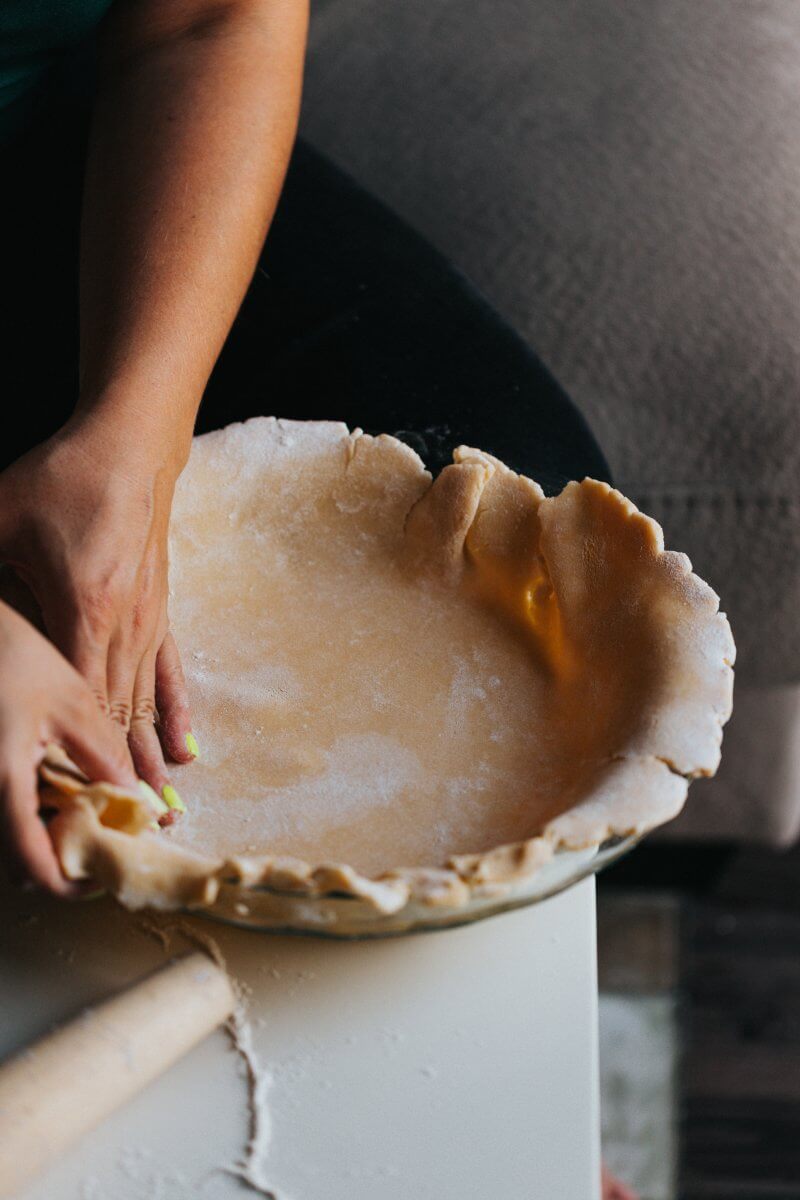
Rough Puff Pastry
Puff pastry and rough puff pastry are both types of laminated dough used in baking, but they do differ in terms of their preparation, level of complexity, and resulting characteristics. Rough puff pastry is a simplified version of traditional puff pastry that’s easier to make at home. While it won’t achieve the same level of flakiness as classic puff pastry, it can still provide a tasty and somewhat flaky result.
Here are a few things to consider:
Rough Puff Pastry:
- Rough puff pastry is a simplified version of puff pastry that’s quicker and easier to make at home.
- It involves mixing butter and flour together, then adding water to form a dough. The butter is not distributed as evenly as in traditional puff pastry.
- The dough is then rolled out, folded, and rolled out again several times to create layers.
- It still involves folding and rolling, but the process is less intricate and time-consuming than with puff pastry.
- Rough puff pastry has fewer and less uniform layers compared to puff pastry.
- It provides a somewhat flaky and tender texture, though it won’t achieve the same level of puffiness and delicacy as puff pastry.
- Rough puff pastry is a good compromise for recipes that require flakiness without the complexity of traditional puff pastry.
Puff Pastry:
- Making puff pastry is a precise and labor-intensive process that involves creating numerous layers of dough and butter.
- The dough is folded and rolled multiple times to create thin layers of dough separated by layers of butter, which result in hundreds of flaky layers.
- Puff pastry requires a higher level of precision and skill due to the complexity of the layering and folding process.
- It takes more time and effort to create, typically requiring multiple folds and long resting periods in between.
- Puff pastry has hundreds of incredibly thin and distinct layers, which result in an extremely flaky and delicate texture when baked.
- It puffs dramatically during baking due to the steam generated by the water in the butter turning into steam.
- It is prized for its lightness, crispness, and intricate layers.
- Use for delicate pastries, turnovers, palmiers, and more elaborate recipes that rely on its intricate layers.
In summary, while puff pastry offers the ultimate flakiness and delicacy due to its complex layering process, rough puff pastry provides a more approachable option that still delivers a good level of flakiness. The choice between the two depends on the specific recipe, your skill level, and the desired outcome.
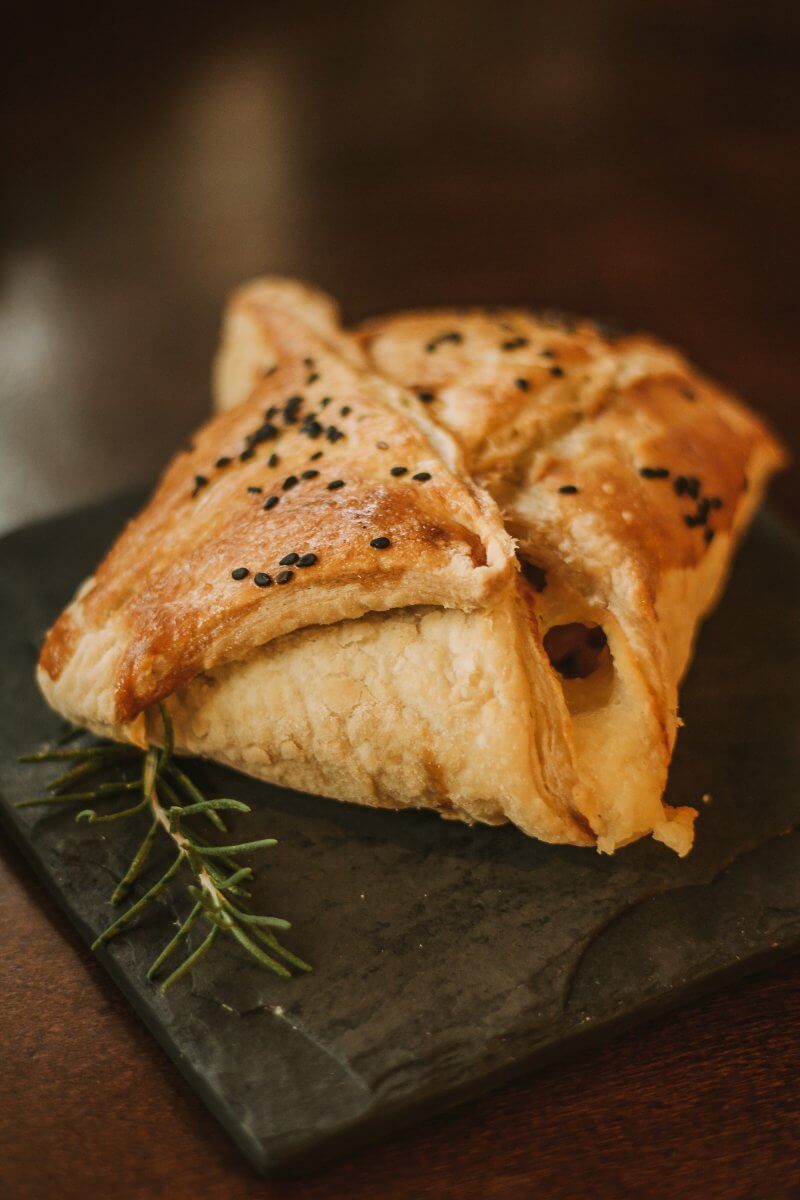
Summary for Puff Pastry substitutes
Okay – that’s you all sorted with suitable substitutes for puff pastry.
Here’s a quick summary of the substitutes for puff pastry that we discussed – hopefully you can find one that is right for you.
- Shortcrust Pastry: A versatile pastry dough that’s easy to make and has a crumbly, buttery texture. Suitable for both sweet and savory recipes like pies and tarts. Doesn’t puff up like puff pastry but provides a sturdy base for fillings.
- Filo Pastry (Phyllo Pastry): Very thin and delicate pastry with crisp and flaky layers. Commonly used in Mediterranean and Middle Eastern cuisines. Used in dishes like baklava, spanakopita, and samosas.
- Croissant Dough: Used for making croissants, known for their flaky, buttery layers. Contains yeast, giving it a slightly yeasty flavor. Use as a type of dough in recipes where you want a rich, buttery flavor.
- Biscuit Dough: Tender, crumbly dough often used for biscuits, scones, and cobbler toppings. Provides a softer texture compared to puff pastry. Suitable for recipes where a more substantial, fluffy texture is acceptable.
- Pie Crust: Crumbly and tender dough used for pies and tarts. Less flaky than puff pastry and may have a richer flavor. Can work in recipes that don’t require the extreme flakiness of puff pastry.
- Rough Puff Pastry: A simplified version of puff pastry with fewer layers. Provides some flakiness and is easier to make at home. Use as a compromise in recipes that require flakiness without the complexity of classic puff pastry.
Each of these substitutes has its own unique characteristics and really depends on the type of dish you are creating. The choice of substitute depends on the texture, flavor, and level of flakiness required for your dish, as well as your skill level and available ingredients.
We have gathered together a lot more facts on ingredients such as herbs, spices, oils, nuts, etc. if you would like to learn some more. Or if you need to swap out another ingredient have a look at our Substitutes section.

